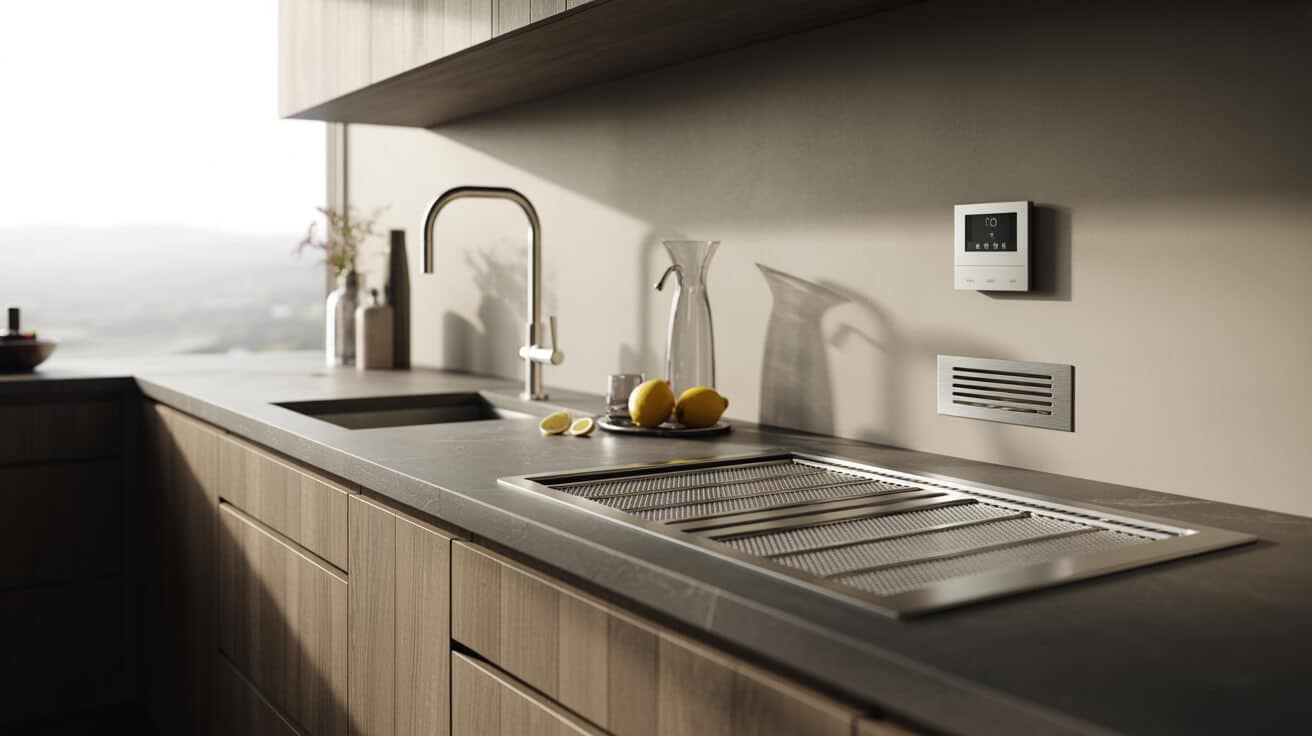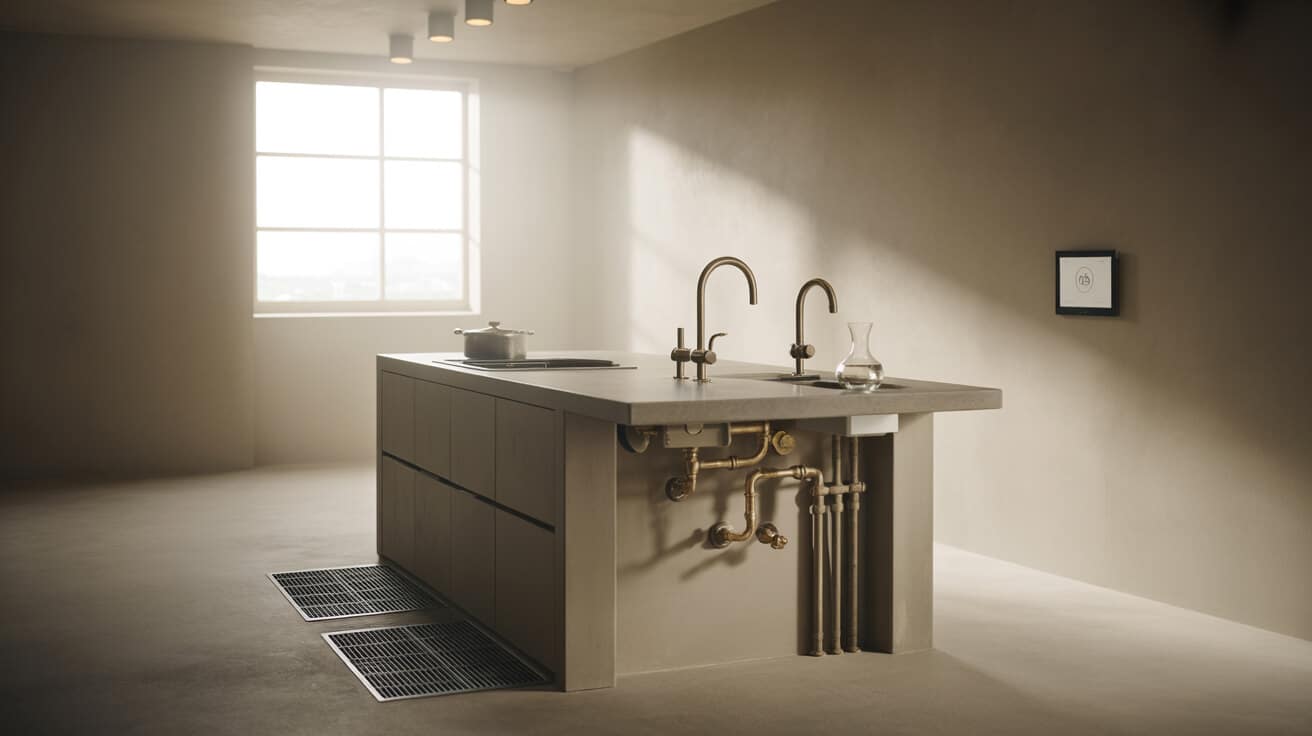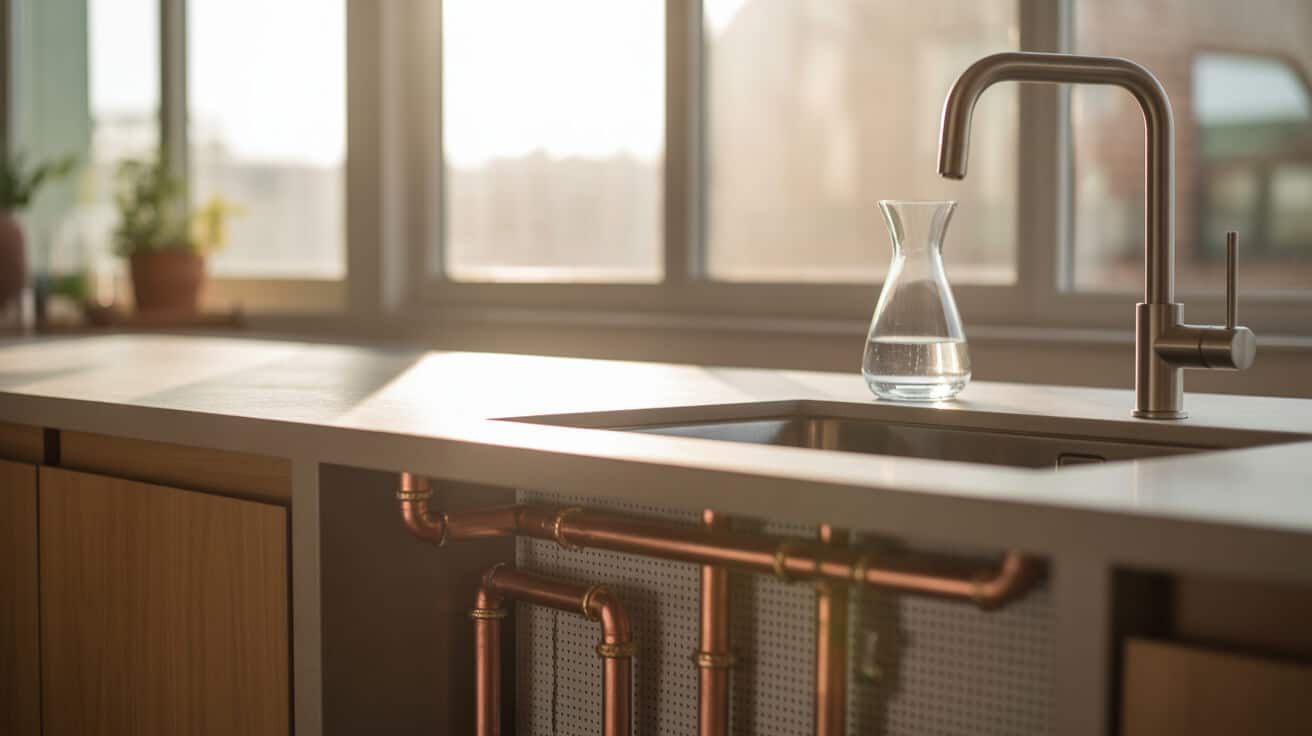Reduced carbon emissions heating operates at the intersection of building physics, energy regulation, and user-centric design. By leveraging equipment such as heat pumps, high-efficiency boilers, and solar integration—combined with smart controls and detailed performance data—your property can achieve measurable reductions in both emissions and operational expenses. Companies including Plumbers 4U coordinate planning, installation, and post-installation care, creating value for you by managing regulatory risks and elevating experience quality. In the context of policy mandates, insurance requirements, and changing consumer preferences, these heating strategies reflect a paradigm shift in both the provision and perception of thermal comfort.
Etymology or name origin
The phrase “reduced carbon emissions heating” arises from climate policy, engineering, and building science. ‘Decarbonisation’ moved from academic use to regulatory frameworks, signifying the systemic shift away from fossil dependency. Sectoral language has evolved—terms like “low-carbon heating,” “green heating,” and “net-zero” reflect increasingly specific technical and legal boundaries. Distinctions between traditional ‘high-carbon’ heating, typically associated with coal, oil, or unregulated gas, and modern approaches lie in compliance, measurement, and the integration of advanced controls.
Overview / context
Heating comprises a substantial portion of energy consumption and emissions in the built environment. Traditional approaches, which burned oil, gas, or coal to provide heat, were inefficient and untargeted, often serving entire structures irrespective of occupancy or need. Over time, governments have identified the reduction of heating emissions as foundational for compliance with national and international climate commitments.
Adoption of low-emissions methodologies is driven by multiple forces:
- Energy performance standards: Raising minimum performance thresholds for rented and commercial properties, currently structured around the Energy Performance Certificate (EPC) in the UK.
- Carbon pricing and compliance costs: Taxes and levies attached to high-emissions fuels increase total cost of ownership.
- Occupant experience: Users expect tailored comfort, digital control, and health/wellbeing assurances.
- Investment trends: Finance and insurance sectors increasingly reward you for futureproofing and penalise legacy heating on risk and premium cost.
Within this frame, the plumbing and heating sector acts as a conduit—translating technical advances and regulatory headlines into actionable (and often mandatory) asset upgrades.
History
Origins
Early heating was direct: open hearths or coal stoves emitting substantial visible and invisible pollutants. These systems produced warmth at the expense of indoor and outdoor air quality, embedding high-emissions footprints in the physical design of homes and businesses.
Industrial emergence
central heating systems, reliant on piped coal gas and later natural gas, revolutionised comfort and scale. Yet, with their spread came the institutionalisation of carbon-intensive heating across urban infrastructure. The first technical standards and efficiency ratings appeared in the late 19th and mid-20th centuries, but adoption remained slow.
Contemporary evolution
The late 20th and early 21st centuries marked a period of intensive regulatory and technical evolution:
- Introduction of condensing boiler technology underpinned ErP labelling and minimum standardisation.
- Launch of national carbon budgets (e.g., the UK’s Carbon Plan) with hard emissions caps and the legal insertion of net zero as a policy endpoint.
- The rise of performance-based building codes and grant schemes (Boiler Upgrade Scheme, RHI, ECO4).
- Integration of digital assessment tools (SAP, SBEM) for objective measurement and reporting.
Domestic, commercial, and public-sector entities began appointing compliance officers or property energy managers, signalling a transformation in day-to-day property management.

Concept / description
Core principles
At its core, reduced carbon emissions heating fuses building thermodynamics, engineering innovation, and digital intelligence to deliver heat with minimum ecological impact. Systems are designed for:
- Fuel switching: Shifting from direct fossil burn to electricity, especially when supplied from renewables.
- Heat recovery and reuse: Extracting latent heat from flue gases, ambient air, or the ground.
- Precise distribution and zoning: Delivering warmth where it is needed, when you require it, and at optimal levels.
Component theory
A “system” now consists of:
- Generator(s): Heat pump (air source, ground source, hybrid), high-efficiency boiler, solar thermal, or combinations thereof.
- Distribution: Underfloor heating, fan coil units, high-output radiators, and smart valves.
- Controls: Zoning, remote, or learning thermostats, weather compensation modules, and performance analytics.
- Efficiency ancillaries: Insulation, buffer tanks, expansion vessels, and monitoring systems.
System boundaries
Lifecycle thinking—embodied energy, operational emissions, and disposal/repurposing—creates new opportunities to address emissions not just at point of use but across stages of asset ownership and use.
Functionality / purpose / applications
Residential applications
Low-carbon heating in your home is deeply customizable. You might leverage an air source heat pump with underfloor heating in a new build or instal a hybrid system combining a heat pump and gas boiler in renovated properties. ‘Digital twins’ (virtual models) of properties can pre-model the impacts and running costs, supporting personalised comfort and maintenance. The ability to set, schedule, and modulate temperatures by room is now expected—never again is the entire home forced to be the same temperature at all times.
Commercial and public-sector deployments
Larger facilities, such as your organisation’s office, school, or healthcare property, benefit from cascading advantages:
- Zoned and demand-based heating: Satisfying diverse user groups and spaces through occupancy and weather automation.
- Centralised energy management: Delivering data-led interventions, audit readiness, and predictive maintenance pathways.
- Compliance enablers: Asset portfolios use system upgrades to meet EPC/MEES targets, gain access to loans or grants, and enhance corporate ESG scores.
Special property types
Heritage buildings, multi-tenanted flats, and off-grid properties present compelling test cases. Here, flexibility in pipe routing, carefully integrated controls, and creative zoning can reduce carbon while retaining historic or architectural significance. Smart heating innovations now allow these properties to achieve compliance without visual compromise.
Classifications / types / variants
Heat pump systems
| Type | Source Medium | Typical Use | Performance Range (SPF) | Compatibility |
|---|---|---|---|---|
| Air source (ASHP) | Outside air | Most domestic/commercial | 2.5–4.0 | Radiators/UFH |
| Ground source (GSHP) | Earth (vertical/horizontal) | Rural, large sites | 3.5–5.0 | UFH, large radiators |
| Hybrid (HP + Boiler) | Air + Gas/Oil | Retrofit/old buildings | 2.0–3.5 | High/varied loads |
- Hybrid options: Used where radiator upgrades are not feasible or where extremely low outdoor temperatures may demand backup.
High-efficiency and hydrogen-ready boilers
- Condensing gas boilers: Capture heat from exhaust gases. ERP A-rated units are now the expected standard.
- Hydrogen-ready boilers: Designed to transition from natural gas to hydrogen as supply chains allow (especially in regions investing in hydrogen infrastructure).
Solar and biomass integration
- Solar thermal: Systems use roof-mounted panels and buffer tanks for domestic hot water, often in tandem with other systems for space heat.
- Biomass boilers: Burn pellets, chips, or logs, providing renewable heat in off-gas or rural properties.
Distribution and zoning
- Underfloor heating (wet/dry): Delivers stable, low-temperature heat; highest performance when paired with heat pumps.
- Radiator upgrades: Replacement to high-output units or finer control via thermostatic radiator valves (TRVs).
- Zoning: Divides property into independently controlled areas, maximising comfort, minimising waste.
Systems / tools / methodologies
Feasibility and sizing assessment
Your engineer or project lead will:
- Digitally model your property envelope and usage.
- Calculate peak loads using SAP/SBEM.
- Assess eligibility for government support schemes.
- Recommend system combinations, upgrades, and future expandability.
- Highlight disruption periods, potential planning constraints, and legacy system compatibility.
Installation and workflow
- Survey and order: Home visit to confirm suitability, followed by quotation and product selection.
- Preparation: Installation plan submitted, permissions checked, finance/grants organised.
- Execution: System instal, controls wiring, distribution setup, and buffer/storage optimization.
- Commissioning: Full system test, performance validation, user demonstration.
Smart controls and automation
- Learning thermostats: Adaptive to your behavioural patterns, weather, and occupancy, reducing ‘deadband’ (time between demand and supply).
- OpenTherm/communication protocols: Enable deep integration, reducing cycling and ramp-up losses.
- Mobile applications: You may control heating remotely, set routines, or monitor system health and energy use.
Maintenance and monitoring
- Service intervals: Heat pumps and Condensing Boilers typically require annual checks; biomass may need more frequent cleaning.
- Remote diagnostics: Some systems, supported by Plumbers 4U and partners, offer continuous system health checks and over-the-air updates.
- Performance reporting: Ongoing access to running cost and emissions tracking supports both operational excellence and compliance.

Stakeholders / entities involved
Installers, specifiers, and engineers
Plumbers 4U and similar companies act as expert advisors, assessors, and installation partners. Their accreditations (e.g., MCS, TrustMark) provide assurance of both compliance and consumer protection.
Customers and property owners
You drive system selection based on regulatory deadlines, comfort desires, and budget parameters. Guidance from trusted installers informs your choices on compatibilities, grants, and aftercare commitment.
Manufacturers and technology suppliers
Researchers, designers, and industrial groups develop new system variants, focusing on durability, operability, and grant eligibility.
Accreditation and regulatory bodies
Entities such as the Department for Energy Security and Net Zero, Ofgem, MCS, and building control ensure correct installation, qualification for incentives, and consumer protection.
Building occupants and users
Engagement by all end-users is essential for maximum return. Training, digital handover packs, and quick-access support lines reduce friction and embed behaviours that deliver promised carbon and comfort benefits.
Legal / regulatory / ethical considerations
Building regulations and minimum standards
- UK Part L (England and Wales), Section 6 (Scotland), Part F (Northern Ireland): set specific U-value and system efficiency parameters.
- MEES (Minimum Energy Efficiency Standards): require most rented properties to achieve at least EPC Band E.
- Policy evolution expects a move towards Band C or higher by 2030 for many asset classes.
Accredited installation and compliance
- MCS and TrustMark schemes govern eligibility for grants and recognition for work.
- Building warranty and insurance can be voided if installation is non-compliant.
Financial support, grants, and reporting
- Boiler Upgrade Scheme (BUS): Flat-rate capital support for heat pump and hybrid instals.
- Renewable Heat Incentive (RHI, legacy): remains relevant for some projects under older rules.
- ECO4: Obligates energy providers to support home efficiency upgrades, including insulation and eligible heating.
- Documentation: SAP assessments, commissioning certificates, and service logs are necessary for compliance.
Ethical and societal dimensions
- Equity and access: Ensuring that heating innovation does not widen gaps in comfort or affordability.
- Consumer protections: Preventing “greenwash” and mis-selling by enforcing transparency and technical disclosure.
Performance metrics / data / measurements
Key quantitative metrics
| Indicator | Description | Source/Standard |
|---|---|---|
| Carbon intensity (kgCO₂e/kWh) | Emissions per unit energy delivered | SAP/SBEM, manufacturer data |
| Seasonal Performance Factor | Annualised heat output/input | MCS, EU ErP, UK SAP |
| EPC band | Whole-dwelling energy performance rating | UK EPC Registry |
| Lifecycle emissions | Full system cradle-to-grave CO₂e | PAS 2050, EN 15978 |
Operational and comfort indicators
- Response time: How quickly a system meets user demand.
- Zoning flexibility: Degree to which you can manage spaces separately.
- Reliability: Mean time between service, rate of failure events.
- User engagement: Uptake and use of programmable features, comfort reporting.
Regulatory compliance data
- Required for sales, rentals, and some insurance/banking products.
- Tracked through digital lodgement of EPCs, SBEM outputs, and grant certificates.
Challenges / barriers / limitations
Technical and site issues
- Legacy barriers: Older, poorly insulated, or protected buildings may resist retrofit without deep modification.
- Complexity: Integration across boilers, pumps, controls, and storage can increase project duration and skill requirement.
- Space limitations: Heat pumps (especially GSHP) may require substantial external land or access.
Economic and process challenges
- Upfront cost: Although supported by grants, total project price is often seen as high versus traditional replacement.
- Market confusion: Overlapping standards, incentive lifespans, and eligibility criteria may cause hesitation.
- Installer capacity: Demand surges outpace supply of trained and accredited professionals in some regions.
Social and behavioural dynamics
- Resistance to change: Concerns over complexity, reliability, and control may deter customers without demonstrable benefit evidence.
- Perceptions of disruption: Fears regarding installation mess, schedule, and continuing engagement needs.
Impact / influence / legacy
Environmental
Widespread adoption yields substantial emissions reduction:
- Heat pumps can reduce your property’s emissions by 50–75% vs. legacy gas, depending on grid conditions.
- Integration with on-site PV can further shrink delivered carbon below current EPC modelling standards.
Asset and property culture
- Modern heating raises property values, aids in lettings/sales, and secures lower insurance and maintenance rates for you.
- Portfolios with compliant heating are less likely to face regulatory risk or devaluation as policies tighten.
Industry and practice transformation
- Companies such as Plumbers 4U integrate system design, digital control, and compliance assessment into standard practice.
- New apprenticeship and training pathways foster multi-skilled engineers able to guide you from feasibility to lifelong support.
Societal effect
- Shifts in marketing, surveying, and letting prioritise “green” features.
- Public sector exemplars and social housing lead collective norm change.
Future directions, cultural relevance, and design discourse
Technological frontier and grid integration
- Hydrogen blending: into gas networks and pure hydrogen boilers are under trial in select regions.
- Thermal storage (phase change, heat batteries): is shrinking peak demand, offering time-shifting potential for renewables.
Retrofit and “whole-house” modernization
- Policy designers are pushing for “deep retrofit,” where insulation, ventilation, and digital heating upgrades are combined.
- Mass-market approaches may include bundled financing, single-vendor project delivery, and data-driven performance contracts.
Regulatory and policy movement
- Next-gen EPCs: and live performance metres may replace static reporting, holding your property to real-world standards.
- Expansion of eligibility for grants to include wider classes of property, and mandates for landlord-led upgrades, are expected.
Cultural adoption and architectural presence
- Customer expectations are normalising digital and renewable heating as markers of quality and responsibility.
- Commercial and community buildings increasingly use heating solution choices to demonstrate sustainability values, with visible, branded technology and public engagement programmes.
Design, adaptation, and the new heating paradigm
- The role of heating system “designer” (not just installer) is emerging, blending technical, regulatory, and user-experience skills.
- Companies like Plumbers 4U exemplify this evolution—facilitating both seamless transitions for existing portfolios and future-ready specification for new assets—embedding performance, compliance, and wellbeing into the identity of your property.

